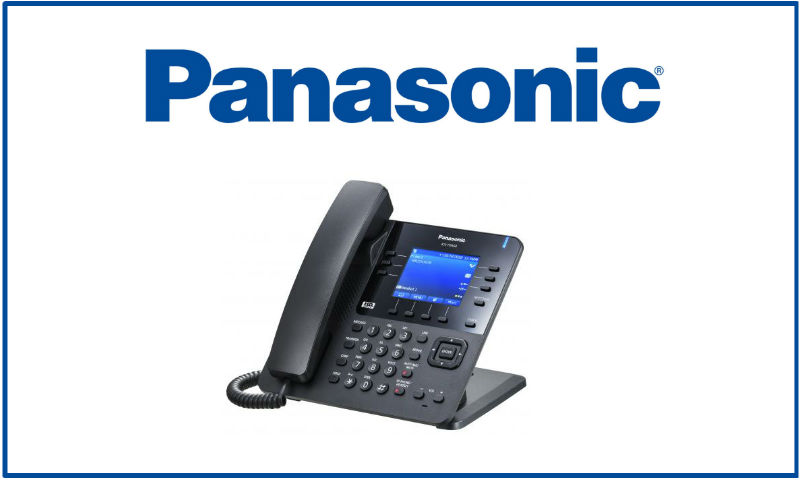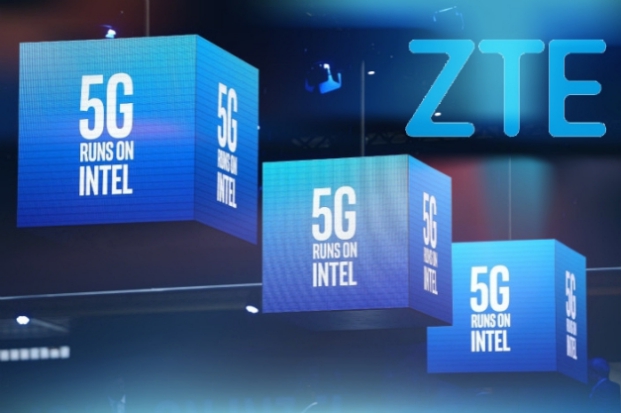The extensive lineup of desktop SIP phone systems has been supplemented by yet another cordless solution, as Panasonic Systems Solutions Company of North America has announced the release of their new SIP cordless KX-TPA68 communication terminal. The phone was designed “for intuitive use and added flexibility as a member of the KX-TGP600 SIP cordless phone system family”. The Panasonic KX-TPA68 facilitates collaboration among staff members and enables real-time shared call appearance. The communication terminal allows users to pick up calls, retrieve held calls and join calls from lines shared across multiple KX-TPA68 cordless desk phones that are registered to the same base unit. The included features allow users to monitor the status of up to six phone lines on the same screen in real-time, and complete actions with a single touch. The new solution features an enhanced user interface and is equipped with a 3.5-inch color LCD, 18…
ZTE Corporation and Intel have jointly launched the Light Cloud platform for access networks at the 5G Summit being held at Mobile World Congress 2019 in Barcelona. The Light Cloud solution is based on Intel’s innovative Edge products, impeccably integrated into ZTE’s flagship optical fiber access platform, Titan, thus merging Multi-access Edge Computing (MEC) and Network function virtualization (NFVI). The solution employs lightweight blade servers equipped with Intel Xeon D processors. When embedded in an OLT or BRAS device, the blade servers transform it into lightweight cloud infrastructure, thus reducing high capital costs and making a positive environmental impact. The infrastructure opens up computing and storage possibilities based on telecom access equipment, and allows the deployment and distribution of application-sensitive services. The access layer with cloud features is supported by built-in blade servers, and facilitates the ability to offer a wide range of cloud applications and services, including…
VoIP has become an integral part of the day-to-day lives of many people throughout the world, offering a plethora of technological advancements and options, simplifying many communication processes and making interactions more convenient and consumer friendly. VoIP is one of the most talked-about technologies, and its prevalence is anticipated to grow in the upcoming years. Over the last twenty years, VoIP has provided businesses around the world with the convenience of increased mobility, due to constant development and emerging cutting-edge technologies. The usage of VoIP as a service has grown rapidly – between 1998 and 2002, VoIP carried only 1-3% of all voice calls worldwide, but in 2005, VoIP was responsible for more than 200 billion call minutes. With 2019 already underway, let’s have a look at what the future holds for the VoIP communications industry. In particular, we examine the insights and predictions regarding the trends and technologies that will…
The technical support team plays a critical role in a VoIP business, being the initial reference and contact point for customers experiencing technology-related issues. In addition, these important employees are responsible for analysing and resolving system failures and outages, product installation errors, user enquiries and any other technical problems that prevent customers from using an application or service. There is a wide and diverse range of possible technical issues that can occur, depending on the type of telecommunication services provided. Nevertheless, some of the most common VoIP connectivity concerns are audio quality, caller-ID problems, the dropping of calls, and post dialling delay (PDD). Studies reveal that passing on valuable technical advice or providing substantial assistance to customers is the number one method for telecom companies to improve the user experience for their products and services. At voip.review, we have summarised some relevant ideas for VoIP providers to…
The networking and telecommunications company Ericsson and Germany’s largest network provider Deutsche Telekom, have announced that together they are the first to successfully demonstrate a wireless transmission on the mmWave spectrum, that can transfer data four times faster than currently existing services. The achievement of the data transmission rate of 40 Gbps with a latency of under 100 microseconds is a considerable advancement towards the fulfilment of stringent latency requirements of 5G, and the anticipated 100 Gbps backhaul networking. Per Narvinger, Head of Product Area Networks, Ericsson, said: “Microwave continues to be a key technology for mobile transport by supporting the capacity and latency requirements of 4G and future 5G networks. Our joint innovation project shows that higher capacity microwave backhaul will be an important enabler of high-quality mobile broadband services when 5G becomes a commercial reality.” A backhaul is an intermediate link between the core network and…
A cloud-hosted, VoIP-powered PBX is an attractive and preferred option for a modern business telephone service. It is extremely cost effective, available for use anytime and almost anywhere, and requires none of the hardware investment that traditional on-premises systems needed in the past. With maturing technology and the desired convenience in business communication, now is the right time for change. Switching to a hosted private branch exchange (PBX) may sound complicated, however a well-thought-out transformational process can be smooth and hassle-free. Let’s discuss the main points to consider when moving from a traditional voice system to a cloud PBX. PBX systems – traditional vs virtual To begin with, it is important to understand the main differences between a traditional PBX and a cloud PBX. A legacy PBX is an enterprise phone system stored and hosted on the customer’s premises, and consists of specialized hardware, generally connected using circuit switched networks.…
Job and project management company simPRO has launched a new VoIP phone solution for trade service businesses in New Zealand. The company believes that the new cost-effective integration will help increase employee productivity, expand service and reduce hardware dependency via the use of web phones. Jonathan Eastgate, simPRO Chief Technology Officer, believes that the VoIP phone integration will be beneficial to trade businesses looking to embrace the industry’s projected digital future. “When using simPRO, the VoIP will draw information to produce caller IDs and maintain call logs which can be viewed in a browser window – all you need is the internet and a headset,” he says. “VoIP provides a flexible, multi-functional solution that couldn’t be simpler to use. Without the need of a traditional telephone handset taking up space on the desk, users can make a call with a push of the mouse or keyboard and connect…
The global telecom giants are increasingly acknowledging the benefits of blockchain technology. Telefonica, a Spanish multinational telecommunications company, has signed a partnership with IBM, a leader in open-source blockchain solutions, to employ IBM blockchain technology for superior administration of international call traffic. Telefonica expects that the usage of the cloud-based IBM Blockchain Platform will help to improve the traceability of international call data, such as the origin of the call, its destination and duration. They will be able to detect fraud and address other challenges caused by the use of different networks and operators when routing international calls. Operators will have permissioned access to a decentralized platform, and perform real-time tracing of calls to achieve accurate billing processes. “This project is one of our first initiatives to secure real benefits from the adoption of blockchain in our core business. We believe that the new paradigm of process decentralization…
Three telecommunication giants, Verizon, Motorola and Samsung, have shared some good news and provided updates regarding progress with the long-awaited 5G network. Verizon has announced that they have successfully accomplished the connection of a 5G-upgradeable Motorola smartphone using a Qualcomm 5G modem and Samsung’s 5G technology to their 5G network. The team performed tests that included video calling and Internet browsing by means of a 5G link. According to Bill Stone, vice president, Technology Development and Planning for Verizon, “In the past two years, we have consistently led the world in 5G, including launching the world’s first commercial 5G service last month”. Obviously upbeat about this successful test using an actual smartphone, he assured, “We will be the first to offer a 5G upgradeable smartphone on our network in 2019.” Verizon’s 28 GHz spectrum and Samsung 5G New Radio solutions were employed to complete the transmissions. The 5G-enabled…
October 1st, 2018 will be remembered as the date when the first 5G broadband network went live, with the telecommunications giant Verizon launching its 5G network in parts of Houston, Indianapolis, Los Angeles and Sacramento. The company confirmed that it will be expanding its coverage shortly, pending the installation of new standards-compliant equipment. “The world’s first commercial 5G service is here. We’ve formed incredible partnerships with many of the world’s leading technology companies, the international technical standards bodies, public officials, developers and our own customers to drive the 5G ecosystem forward, faster than most had predicted. And now, actual customers. It’s been an incredible journey…and we’re just at the starting line,” the president of Verizon Wireless, Ronan Dunne, expressed enthusiastically. The very first user on this network, a resident of Houston, Clayton Harris, became one of the early adopters by setting up a “5G Home” service, an ultra-fast…













